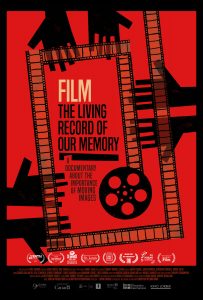
“Film, The Living Record of Our Memory”
(Spain/Canada)
Rotten Tomatoes (4.5/5), Metacritic (9/10), Letterboxd (4.5/5), Imdb.com (9/10), TMDB.com (9/10)
Film has become so pervasive in our society that we tend to take it for granted. From big screen blockbusters to intimate arthouse dramas and documentaries to home movies, we see these cinematic records of us and our world virtually everywhere we look. It’s a phenomenon that’s present globally, too, one that spans all seven continents. And, because these images have been committed to a fixed medium, we tend to assume that these records will be with us permanently. But will they? As writer-director Inés Toharia Terán’s compelling new documentary reveals, that’s not an assumption we should make – indeed, far from it. This excellent examination of film preservation efforts is an eye-opening revelation, showing us just how much of film history has been lost through deterioration, censorship, careless management and even willful destruction – an estimated 80% of all silent films ever made and roughly 50% of those created since the invention of talkies. The documentary explores the reasons behind these tragedies, as well as the efforts that have been made to save and/or restore pictures that could have easily – or still might possibly – become lost without concerted initiatives to protect them. Terán’s work is particularly impressive from the standpoint of comprehensiveness, showing the impact that this effort has had on film collections from around the globe, from all ages past and from all genres, including not only entertainment offerings but also documentary footage and even those designed to capture cherished personal memories. Through interviews with leading directors, archivists, restoration professionals and photographic industry experts, viewers gain an insightful new appreciation for why these celluloid records matter to us and why it’s important to make the effort to save them from neglect before they’re gone forever. Admittedly, some may find this offering a little overlong, but, in my view, better more than less when it comes to a showcase aimed at purposely illustrating the need to preserve these precious and otherwise-irretrievable materials. And, to its credit, the film does a fine job of keeping its narrative from becoming too technical, a noteworthy accomplishment for a subject that could easily become overly burdened by indecipherable jargon. “Film” is must-see viewing for anyone who loves movies and passionately desires to see as many of them curated as possible, making their continued existence available to posterity as a genuine living record of our memory.




Leave A Comment